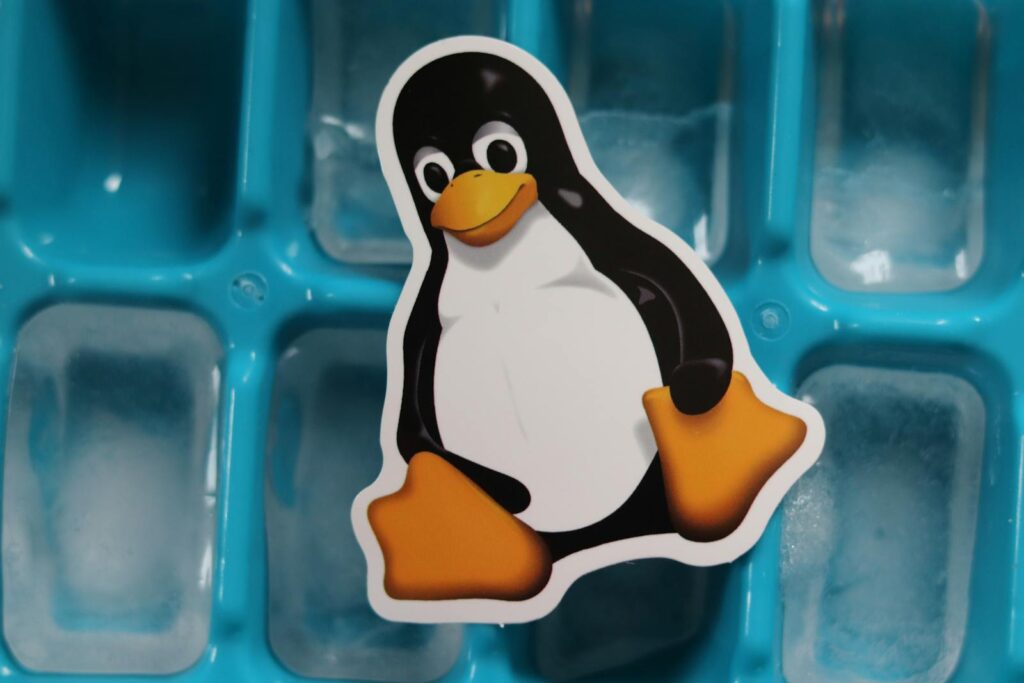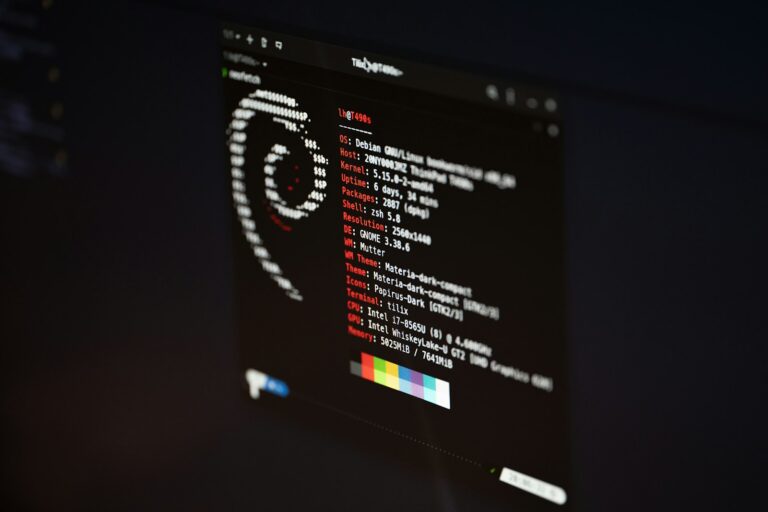Picking the best Linux distro for a Dell Latitude can make a big difference in performance, compatibility, and overall user experience. Some distributions work better with Latitude hardware than others, so choosing the right one can save you time and headaches. This guide breaks down the best options based on hardware support, speed, and ease of use—whether you need something lightweight for an older Latitude or a powerful setup for development and work.
Table 1: Best Linux Distros for Dell Latitude Based on Use Case
| Use Case | Recommended Distro | Why It’s a Good Fit |
|---|---|---|
| Best for Beginners | Ubuntu, Linux Mint | Easy to install, great community support, and user-friendly interface |
| Best for Developers | Fedora, Pop!_OS | Offers the latest software, strong security, and excellent performance for coding and development |
| Best for Battery Life | Linux Mint, Manjaro | Optimized resource usage for longer battery life |
| Best for Older Laptops | Manjaro, MX Linux | Lightweight, runs smoothly on older hardware |
| Best for Customization | Arch Linux, Manjaro | Gives users more control over the system and desktop environment |
Table of Contents
Why Dell Latitude Works Well with Linux
Dell Latitude laptops are a favorite among Linux users for good reason. They’re well-built, reliable, and powered by Intel processors that work smoothly with most Linux distributions. Many Latitude models support Linux right out of the box, making setup quick and easy.
Dell has also been a strong supporter of open-source software. In fact, some Latitude models even come with Linux pre-installed, such as those available with Ubuntu directly from Dell. This makes Latitude an excellent choice for anyone—from beginners looking for a stable system to developers who need a customizable, high-performance machine. Whether you’re coding, managing servers, or just want a reliable laptop that runs Linux well, a Latitude is a solid pick.

Linux Distro Performance Comparison on Dell Latitude
| Distro | CPU Usage | Battery Life | Boot Time (Seconds) | Heat Management |
|---|---|---|---|---|
| Ubuntu | Moderate to High | Moderate | 25 | Good under typical loads |
| Fedora | Moderate | Moderate | 23 | Efficient under load |
| Pop!_OS | Moderate to High | Moderate | 20 | Excellent for heavy tasks |
| Linux Mint | Low | Excellent | 18 | Efficient for lighter tasks |
| Manjaro | Low | Excellent | 16 | Good for most tasks |
What to Look for in a Linux Distro for Dell Latitude
Choosing the right Linux distro for a Dell Latitude depends on a few key factors. While most modern distributions work well, some offer better hardware support, performance, and user experience than others. Here’s what to consider:
Hardware Compatibility
Your Linux distro should fully support your laptop’s hardware, including Wi-Fi, GPU, and touchpad drivers. Dell Latitude models vary in specs, so picking a distribution with strong hardware support is key.
- Best for Compatibility: Ubuntu, Fedora, and Pop!_OS are known for excellent out-of-the-box support, reducing the need for manual driver installation.
- Check Before Installing: If you’re using newer or less common hardware, it’s a good idea to test compatibility using a live USB before committing to an installation.
Performance
Different Linux distros use system resources differently, so performance can vary depending on your laptop’s age and specs.
- For Older Latitudes: Lightweight options like Linux Mint, Manjaro, or Xubuntu keep things fast and responsive without using too much RAM or CPU.
- For Newer Latitudes: If you have a more powerful laptop, Fedora or Ubuntu provide a good mix of performance and cutting-edge features.
User Interface & Experience
The right interface makes all the difference. Some distros focus on simplicity, while others cater to users who love customization.
- User-Friendly Options: Ubuntu and Linux Mint are great choices if you’re coming from Windows or macOS. They have clean interfaces and are easy to navigate.
- Customizable & Advanced: Manjaro and KDE Neon give you more control over the desktop environment, perfect for users who want to fine-tune their setup.
Software Support & Ease of Use
Having access to the right apps and a helpful community can make your Linux experience smoother.
- Best for Beginners: Ubuntu and Pop!_OS have massive software repositories and strong community support, making them ideal for first-time Linux users.
- For Cutting-Edge Updates: If you want the latest software and kernel updates, Fedora and Manjaro offer newer packages while still being stable.
By focusing on these factors, you’ll find a Linux distro that not only works well with your Dell Latitude but also fits your needs and workflow.

Top 5 Linux Distros for Dell Latitude
Ubuntu
Ubuntu is one of the most popular Linux distributions and is an excellent choice for Dell Latitude users due to its ease of use and strong hardware support. Dell has even partnered with Ubuntu to offer pre-installed options on some Latitude models, ensuring seamless compatibility with the laptop’s hardware. Whether you’re new to Linux or need a reliable system for development, Ubuntu provides an intuitive experience with extensive community support.
Pros:
- Ideal for beginners with a user-friendly interface
- Excellent driver support for Dell Latitude hardware
- Large community with plenty of resources and tutorials
- Available pre-installed on certain Dell Latitude models
Cons:
- Can be heavy on system resources
- Includes some pre-installed software that may not be needed by advanced users
Best For: General users, developers, and those new to Linux who want a stable and widely supported distro.
Fedora
Fedora is known for its cutting-edge features and stability, making it a great option for developers and tech enthusiasts using Dell Latitude laptops. As a Red Hat-sponsored distribution, Fedora stays on the forefront of Linux technology with the latest kernel updates and software versions. For Latitude users seeking performance and modern features, Fedora delivers a polished, professional environment.
Pros:
- Strong support for modern hardware and quick kernel updates
- Ideal for developers needing the latest software packages
- Clean and polished GNOME desktop environment
Cons:
- Less beginner-friendly due to fewer out-of-the-box conveniences
- The rolling release model can sometimes impact system stability
Best For: Developers, power users, and those who want the latest Linux technologies.
Pop!_OS
Designed by System76, Pop!_OS is optimized for performance and hardware compatibility, making it an excellent fit for Dell Latitude users who need a responsive system for gaming, productivity, or development. Pop!_OS stands out with its focus on delivering a clean and powerful user experience, and it comes pre-packaged with a host of developer-friendly features. The distro also has a privacy focus, appealing to users who prioritize security.
Pros:
- Optimized for performance and hardware, including Dell Latitude
- Clean and minimalist design with tiling window management
- Privacy and security features built into the OS
Cons:
- Less customization compared to other distros
- Smaller user base compared to Ubuntu and Fedora
Best For: Gamers, developers, power users, and privacy-conscious individuals looking for a polished, performance-centric Linux distro.
Linux Mint
Linux Mint is a highly accessible and lightweight Linux distro, making it a popular choice for users switching from Windows, especially on older Dell Latitude models. Mint is built on top of Ubuntu but focuses on a simpler, more familiar desktop experience, which makes it one of the best Linux distros for Dell Latitude laptops that might have limited resources or older hardware.
Pros:
- Lightweight and responsive, even on older Dell Latitude models
- Familiar interface for Windows switchers
- Strong community and plenty of documentation for beginners
Cons:
- Less frequent updates compared to other distros
- Lacks some cutting-edge features found in more modern distributions
Best For: Beginners, users of older Dell Latitude models, and those switching from Windows who want a straightforward and reliable Linux experience.
Manjaro
Manjaro is an Arch-based distribution that offers a rolling release model and a highly customizable user experience. It’s lightweight and offers excellent performance on Dell Latitude hardware, especially for users who want more control over their system. Although it’s based on Arch Linux, Manjaro is more accessible and user-friendly, making it a good option for those who want the power of Arch without the steep learning curve.
Pros:
- Lightweight and fast, with excellent performance on Dell Latitude
- Highly customizable desktop environments
- Active community and support forums
Cons:
- Can be overwhelming for new Linux users
- Rolling release can lead to stability issues if not carefully managed
Best For: Experienced Linux users, customization enthusiasts, and those looking for a flexible and powerful distro for their Dell Latitude.
Installation Checklist for Dell Latitude
| Installation Step | Action Required | Details |
|---|---|---|
| Create Bootable USB | Use Rufus/Etcher to create a bootable USB | Download the distro ISO and use Rufus or Etcher to prepare the USB drive |
| Adjust BIOS Settings | Disable Secure Boot, adjust boot order | Access BIOS by pressing F2/F12 during startup and make necessary changes |
| Install Linux | Follow on-screen prompts | Choose either standalone installation or partitioning for dual boot |
| Dual Boot Considerations | Partition the hard drive | Use the Linux installer’s partition manager to preserve Windows installation |
What to Look for in a Linux Distro for Dell Latitude
Hardware Compatibility
The first thing to consider when choosing the best Linux distro for a Dell Latitude is hardware support. Latitude models come with different configurations, so it’s important to pick a distro that works well with Wi-Fi, GPU, and touchpad drivers. Mainstream options like Ubuntu, Fedora, and Pop!_OS generally offer strong out-of-the-box support, meaning fewer headaches during setup.
Performance
Not all Linux distributions handle system resources the same way, which can impact both older and newer Dell Latitude models. If you’re using an older laptop, lightweight distros like Linux Mint or Manjaro can help keep things running smoothly without using too many system resources. For newer models, power users may prefer Fedora or Ubuntu, which offer a balance between performance and the latest features.
User Interface & Experience
Your choice of Linux distro also affects how easy and enjoyable your laptop is to use. Some distros focus on user-friendly interfaces with simple customization, while others are built for advanced users who like to tweak their setup. If you’re coming from Windows or macOS, Ubuntu and Linux Mint offer familiar, easy-to-use desktops. If you want more control over customization, Manjaro is a great pick.
Software Support & Ease of Use
Having access to the software you need is just as important as performance. Ubuntu and Pop!_OS are great choices because they have huge software repositories and active communities. If you need troubleshooting help, you’ll find plenty of online guides and forums. More advanced users who want cutting-edge updates might prefer Fedora or Manjaro, which offer the latest software without sacrificing stability.
Performance Benchmarks on Dell Latitude
CPU Usage Across Distros
Each Linux distro manages system resources differently, which impacts CPU usage. Heavier desktop environments like GNOME on Ubuntu and Fedora tend to use more CPU, while Pop!_OS offers better hardware optimization for balanced performance. If you’re using an older Dell Latitude, lightweight distros like Linux Mint and Manjaro put less strain on the CPU, making them a better choice for speed and efficiency.
Battery Life
Battery life depends on how efficiently a distro manages power. While Ubuntu and Pop!_OS are optimized for performance, they can drain the battery faster. If battery life is a priority, Linux Mint is a better choice since it’s designed for efficiency and longer uptime. Fedora strikes a balance between performance and power management but isn’t as battery-friendly as Mint or Manjaro.
Boot Time Comparison
Some distros boot up faster than others. Here’s a comparison of average boot times on a Dell Latitude:
| Distro | Boot Time (seconds) |
|---|---|
| Ubuntu | 25 |
| Fedora | 23 |
| Pop!_OS | 20 |
| Linux Mint | 18 |
| Manjaro | 16 |
Heat Management
When running demanding tasks, heat can become an issue. Pop!_OS and Fedora handle this well, with better CPU throttling and power management to keep your laptop from overheating. Linux Mint and Manjaro also perform well in this area since they are lighter and put less strain on the system during normal use.
Installation Tips for Dell Latitude
Creating a Bootable USB
To install Linux on a Dell Latitude, you’ll need a bootable USB drive. Tools like Rufus (Windows) or Etcher (Windows, macOS, Linux) make this process easy. Just download the ISO file for your chosen Linux distro, insert your USB drive, and follow the tool’s steps to create a bootable installation drive.
Adjusting BIOS Settings
Before installing Linux, check your BIOS settings. Secure Boot is often enabled by default, which can prevent some Linux distros from booting. To avoid issues, disable Secure Boot in the BIOS. You might also need to change the boot order so your laptop starts from the USB drive instead of the internal storage.
Setting Up Dual Boot
If you want to keep Windows alongside Linux, you’ll need to set up dual booting. Most Linux installers, including Ubuntu and Fedora, have built-in tools to help you partition your drive without deleting Windows. Just follow the prompts during installation, and you’ll be able to choose between Windows and Linux when you start your laptop.
Common Issues and How to Fix Them on Dell Latitude
Wi-Fi Issues
If your Dell Latitude isn’t connecting to Wi-Fi after installing Linux, you may need proprietary drivers. On Ubuntu and Pop!_OS, this is easy to fix:
- Open the Software & Updates application.
- Go to the Additional Drivers tab.
- Install the recommended Wi-Fi driver.
For other distros, you may need to install drivers manually using the package manager.
Touchpad Issues
If your touchpad feels unresponsive or lacks multi-touch gestures, installing the libinput package can help. Run this command on Ubuntu-based distros:
sudo apt install xserver-xorg-input-libinputAfter installing, reboot your laptop to apply the changes.
GPU Driver Issues
If your Dell Latitude has an NVIDIA GPU, some distros may require manual driver installation. Pop!_OS includes built-in support, but for Ubuntu-based systems, you can install the correct drivers with:
sudo ubuntu-drivers autoinstallOnce installed, restart your system for the changes to take effect.
Conclusion
Dell Latitude laptops work well with Linux, offering strong hardware compatibility across multiple distros. If you want a balance of performance and usability, Ubuntu and Pop!_OS are great choices. For older models, lightweight options like Linux Mint and Manjaro provide a smoother experience.
The best way to find the right fit is by testing different distributions. Since Linux is all about flexibility, you can always switch if one distro doesn’t meet your needs.
FAQs
What is the best Linux distro for a Dell Latitude laptop?
The best distro depends on your needs. Ubuntu and Pop!_OS offer great hardware support and ease of use. Linux Mint and Manjaro are lightweight and work well on older models. Fedora is ideal for developers who want the latest software.
Does Dell Latitude support Linux out of the box?
Many Dell Latitude models work with Linux without extra setup. Some even come with Linux pre-installed. However, certain features like Wi-Fi or the touchpad may need additional drivers, especially on newer models.
How do I install Linux on a Dell Latitude?
Create a bootable USB using tools like Rufus or Etcher, disable Secure Boot in BIOS, and boot from the USB drive. Follow the installation steps provided by your chosen Linux distro.
Can I dual boot Linux and Windows on a Dell Latitude?
Yes, most Linux installers include a guided option for dual booting. You’ll need to partition your drive to create space for Linux, and the installer will help set up the boot menu.
How do I fix Wi-Fi issues on a Dell Latitude running Linux?
Check for proprietary drivers under “Additional Drivers” in Ubuntu or Pop!_OS. If your Wi-Fi still doesn’t work, install drivers manually using your distro’s package manager or connect via Ethernet to update your system.
Which Linux distro gives the best battery life on a Dell Latitude?
Linux Mint and Manjaro are known for power efficiency. They use fewer system resources, which helps extend battery life. Ubuntu and Fedora offer good performance but may drain the battery faster.
How do I install NVIDIA drivers on a Dell Latitude?
If your laptop has an NVIDIA GPU, Pop!_OS includes built-in drivers. On Ubuntu, run “sudo ubuntu-drivers autoinstall” in the terminal. Restart your laptop after installation for the changes to apply.

